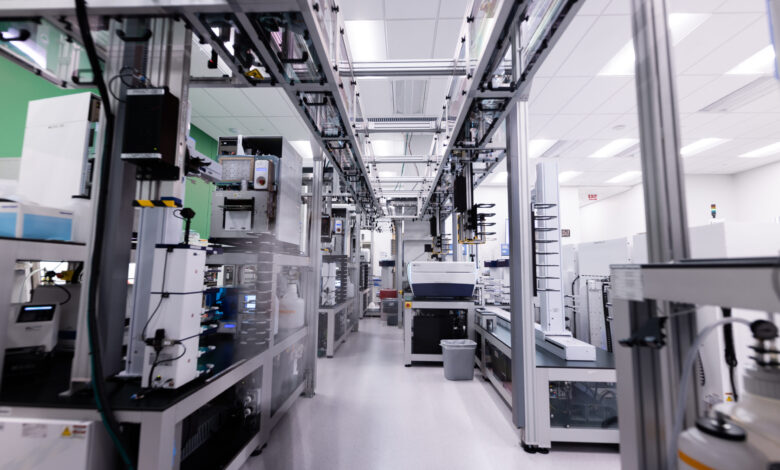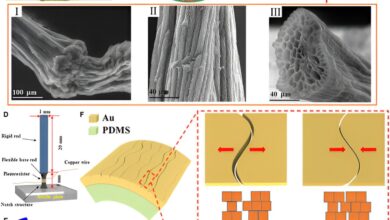The future of manufacturing is automated

This story appears in the April issue of Utah Business. Subscribe here.
The first practical application of robotics made its debut in Detroit in the early ’60s when the Unimate robotic arm joined the production line at a General Motors plant. A crude machine by today’s standards, perhaps, but one capable of tirelessly lifting and stacking the heavy die-cast steel components of the day.
The auto manufacturing industry has gone on to embrace the technology at ever higher scales. A typical assembly line now looks more like futurescapes wrought by science fiction authors than the original “moving assembly line” that Henry Ford deployed in the early 20th century, albeit one that could produce a completed Model T every 90 minutes.
Robotics have since burgeoned far beyond the manufacturing floors of automakers, now numbering in the millions globally and increasingly deployed in a wide range of processes. Marina Bill, president of the International Federation of Robotics, noted in a recent report that robot “density” hit an all-time high of 151 robots per 10,000 workers in 2022, more than doubling the figure of just six years ago. In the United States, the ratio is even higher, with 285 robots per 10,000 employees and a robot density ranking 10th in the world.
Along with the proliferation of ever more advanced robotics and manufacturing automation have come fears that the innovations will replace human workers. Fast-advancing artificial intelligence (AI) and machine learning tools, the “brains” that drive many robotic processes, have only fanned the flames of those concerns. In an interview last year, Microsoft founder Bill Gates predicted that AI-powered humanoid robots were on track to become more affordable than human laborers and will begin replacing blue-collar workers.
Alongside those concerns are the track records of companies for which robotics and automation form the very core — and whose successes and growing employee ranks would not exist but for advanced innovations.
Higher quality, lower cost
Utah’s Ultradent Products, Inc., started in the late ’70s when founder and dentist Dr. Dan Fischer innovated a product that helped control bleeding during dental procedures. Fischer hoped to sell his idea to an established medical device manufacturer, but after he was unable to find a taker, he decided to launch his own company.
Ultradent is now a global leader in specialty products and devices for the dental industry, with a product portfolio numbering over 1,600. According to its leaders, the company’s embrace of robotics and automation has been an essential driver of its success.
Peter Allred, Ultradent’s SVP of Manufacturing and Supply Chain, says the privately-held company leaned on growth financing to phase in robotics and automated processes beginning in the ’90s. The transition, he noted, was one borne of the quest for elevating quality and consistency over mere cost reduction.
“We started with processes that were prone to human-caused quality variation and operations that required high dexterity, repetitive or tiring motions,” Allred says. “Today, all of our device manufacturing of more than 1,600 products is at least partially automated, and dozens are fully automated up to final packaging, which is still performed manually. … I would say, generally speaking, we have not ever really used automation as a means to drive cost savings, though that is certainly a side benefit. It’s really been more focused on taking away labor requirements where we know human interaction will affect quality.”
Allred says Ultradent’s impetus to innovate has drawn inspiration from those who have “approached the world with curiosity” and dreamt up ways to contribute to it, citing Ford, the Wright brothers, Leonardo DaVinci, famous Toyota engineer Taiichi Ohno and others.
While inspired by the historic work of industry titans, Allred says Ultradent has taken a holistic approach to adopting and integrating robotics and automation, paying particularly close attention to wider impacts and outcomes.
“It is easy to miss much of the value of automation if we don’t carefully consider how it fits into the overall production system,” he says.
Among those chief concerns are impacts on Ultradent employees. Ultradent’s robotics and automation systems have helped replace manual manufacturing processes heavy on repetitive motion — the kind of jobs where workers can be plagued by ergonomic injuries that come with that level of repetition, Allred says.
By integrating the new systems alongside employees rather than replacing them, Ultradent’s technology adoption has had transformational impacts on its employees. Not only have they stayed on, but they have also been upskilled along the way, leading to higher wages for those workers.
It’s an approach that has resonated with Ultradent employees.
“I would wager that there isn’t a single employee who, if you asked them about our strategy with respect to automation, ever believed it was a threat to their employment,” Allred says. “Over, say, 25 years … we have not seen a net decrease or layoffs associated with the integration of robotics or automation.”



